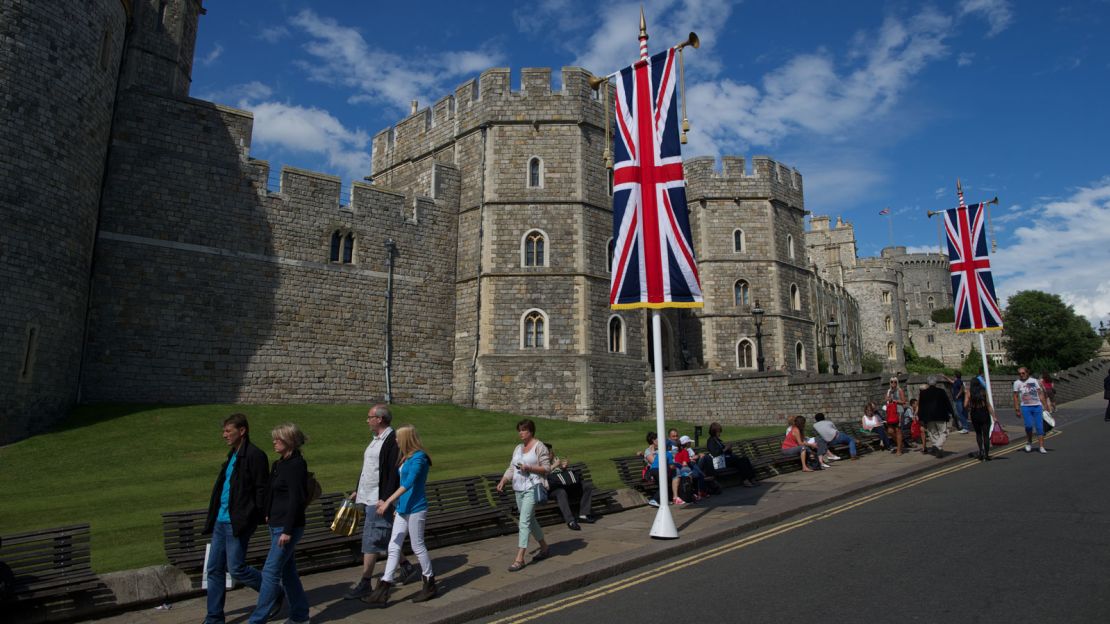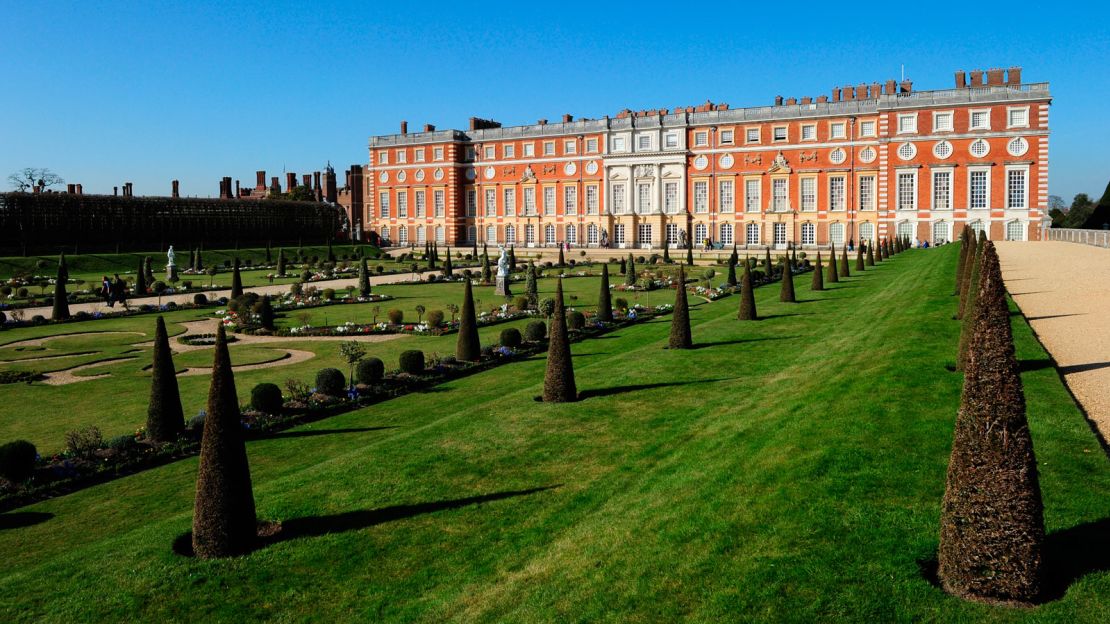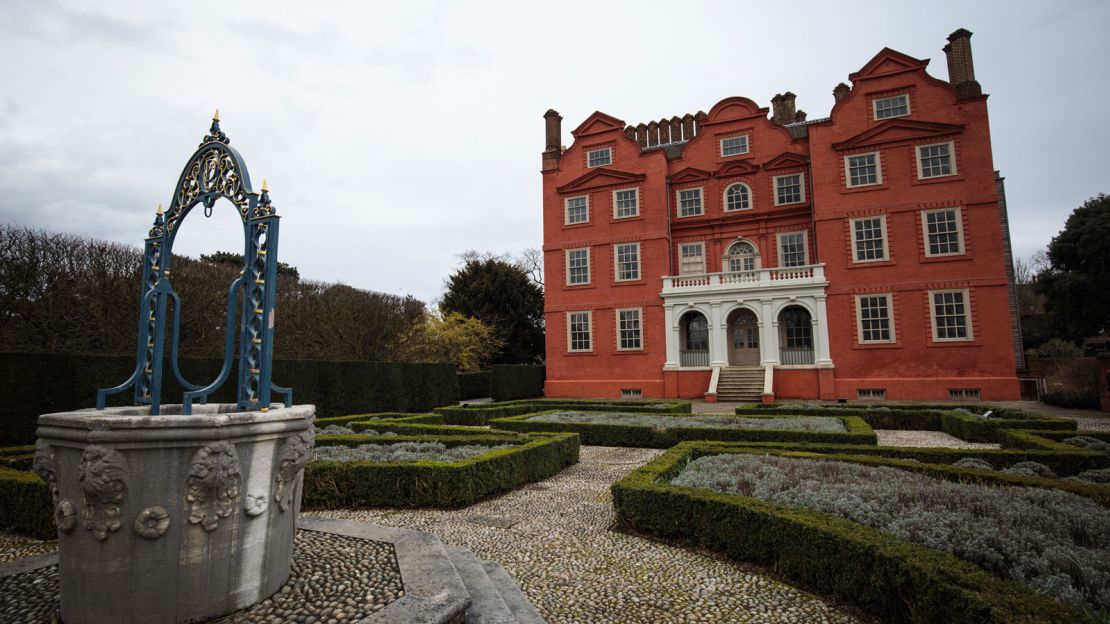Pomp, history and more castles than “Game of Thrones.” Britain’s Royals may be a firmly 21st century brand these days, but this regal bunch still exemplifies an older time of tradition and ceremony.
If you want to wave a flag at Prince Harry and Meghan Markle’s wedding celebrations, you are not alone. The world just can’t seem to get enough of arguably the world’s best-known aristocrats.
There’s no better destination than London if you want to plug into the 1,000-year history of British kings and queens. The UK’s capital has an array of palaces, museums and galleries open to the public including royal HQ Buckingham Palace and Kate and Wills’ official residence Kensington Palace.
You simply won’t get a proper taste of royal London without visiting at least one of these places. Who knows, you might even catch a glimpse of the Queen herself.
The Queen’s favorite weekend getaway Windsor Castle

Windsor Castle has some superlatives in its resume. Not only is it the world’s largest continuously inhabited castle, it’s also the oldest.
It also happens to be one of the Queen’s main residences – she spends most of her private weekends here. The Royal Standard flies from the Round Tower when Her Majesty is home.
Windsor is also the place chosen for the marriage of Prince Harry and Meghan Markle – royal officials say it’s “special place for the two of them.”
There’s lots to see and the castle is not actually in London – it’s in the upscale town of Windsor, also home to the UK’s best-known public school Eton College – so budget a day to travel and see everything.
Highlights include The State Apartments used by the royals for official events and the delicate Gothic architecture of St George’s Chapel where 10 kings including Henry VIII and Charles I are buried.
If you missed the Changing of the Guard at Buckingham Palace, you can see a version here, weather permitting during spring and summer months.
Queen Mary’s Dolls’ House is a real don’t-miss object: We know what some of you may be thinking, but this is an architectural marvel in miniature. It was created by British architect Edwin Lutyens (also known for his role in designing New Delhi) and features extraordinary attention to detail including running water and electricity.
Because this is one of the Queen’s residences, some parts can be closed depending on the time of year. Check the website for details.
Windsor Castle, Windsor, Berkshire SL4 1NJ. Admission: Adults $27 (£20.50), Under 17s $15.75 (£12)
Gilded public rooms at Buckingham Palace

Buckingham Palace, the official London residence of the Queen and Prince Philip, opens to the public when the royals are on summer vacation.
You won’t be able to nose around the whole palace (the Queen does live there after all, in private apartments on the north side). But visitors can admire sumptuous Regency interiors and priceless art in the State Rooms, where the royal family entertain the great and good.
There’s more art from the impressive Royal Collection in The Queen’s Gallery and fairytale carriages in the Mews.
A Royal Day Out ticket (adults about $52, under 17s $29) gives access to all three plus a stroll in the gardens. An audio guide is included in the price. Dropping $100 secures an exclusive evening tour of the State Rooms with a glass of champagne thrown in.
Out front, try to catch the Changing of the Guard for a pomp-and-ceremony-filled spectacle carried out by soldiers in giant bearskin hats.
Buckingham Palace, London, SW1A 1AA
Gothic grandeur and royal tombs at Westminster Abbey
Walk the same checkerboard floor as Kate did on the day of her 2011 wedding to Prince William. Then clock the Abbey’s awe-inspiring royal heritage: 16 more weddings, 17 tombs of Kings and Queens and the coronations of almost every monarch for 1,000 years.
Buried alongside the royals under the Abbey’s towering Gothic masonry are celebrated Brits: Darwin, Dickens, Olivier, Handel and Livingstone, among others.
Find beloved creatives like C.S. Lewis, Philip Larkin, Jane Austen, Rudyard Kipling and many more commemorated in Poets’ Corner in the South Transept.
A new museum and gallery called The Queen’s Diamond Jubilee Galleries is planned for 2018. It’s being built in a medieval arcade 20 meters above the Abbey floor that’s been hidden from the public for 700 years.
For the full lowdown on all the Abbey’s wonders, download the nifty audio tour narrated by actor Jeremy Irons onto your smartphone before you go. The Abbey is still a functioning place of worship, so don’t forget to check visiting times.
Westminster Abbey, 20 Deans Yard, Westminster, London SW1P 3PA; +44 20 7222 5152; Admission:
Adults $28 (£22), 16 and under $11.50 (£9). Tickets are cheaper online.
Queen Victoria’s birthplace at Kensington Palace

This stylish 17th century royal residence is now the official London home of the Duke and Duchess of Cambridge.
So it’s kind of them to let visitors stroll through the opulence of the King’s State Apartments, the Queen’s State Apartments and gardens.
From its earliest days as home to the court of William and Mary of Orange the palace has been privy to many extraordinary moments in history. Queen Victoria was born here in 1819 and was given the news of her accession to the throne here 18 years later.
With successive monarchs spending lavishly on decor, the palace has come to be thought of as “fashionable.” This was cemented in the 20th century when it was home to Princess Margaret, the Queen’s late sister and a fashion icon in her day.
It’s also where glamorous Diana, Princess of Wales lived until she died. The national outpouring of grief following her death in 1997 led to thousands of tributes and flowers being placed at the foot of the palace’s golden gates. You can trace Diana’s style evolution in “Diana: Her Fashion Story,” an exhibition of her famous fashions.
Kensington Palace, Kensington Gardens, London W8 4PX; +44 20 3166 6000; Admission: Adults $20 (£15.50), Under 16s Free. Tickets are cheaper online.
A millennium of blood at the Tower of London

This formidable 11th century fortress has a bloody history that includes the imprisonment of kings, the execution of queens and battles galore.
For 600 years, it was also a kind of zoo: home to exotic royal pets including monkeys, zebras, alligators and a polar bear.
Take a tour with one of the Yeoman Warders, better known as “Beefeaters” (although don’t call them that to their faces) for the low down on 1,000 years of flamboyant British monarchs, grisly traitor deaths and famous imprisonments.
More gruesome insights are available in the Royal Armouries in the White Tower, which is filled with weapons and cruel instruments.
For some levity, check out The Crown Jewels, but get there early – the Tower is also famous for queues.
All 23,578 of them are kept in the Jewel House under armed guard. Many are still used by the Queen in ceremonies like the State Opening of Parliament. Look out for the “in use” signs.
There’s lots for kids here too: statues of the royal animals, costumed tours, feeding time for the Tower’s famous ravens and a multimedia guide specifically designed for children.
Tower of London, London, EC3N 4AB; Admission: Adults $33 (£24.80), Child $15 (£11.50), Under 5s Free. Tickets are cheaper online.
Henry VIII’s playground at Hampton Court Palace

This sprawling red brick palace built by Henry VIII’s Cardinal Thomas Wolsey in 1514, and seized by the King after the chancellor fell from favor, is the quintessential Tudor playground.
It was already one of Europe’s most fancy palaces when architect Christopher Wren added a 17th century “restrained Baroque” extension that blends harmoniously into the earlier building.
You can easily while away a day here: baffle yourself in the world-famous maze, check out a pearl-and-gem encrusted recreation of Henry VIII’s crown in the magnificent Chapel Royal, see priceless Renaissance treasures in the Mantegna Gallery and paintings by Rembrandt, van Dyck and Holbein in the Cumberland Art Gallery.
One of the most fun parts of this palace is the 16th century quarters. You can see what the king feasted on in a working recreation of Henry VIII’s kitchens and then wander though his Great Hall, where the banquets were eaten. Don’t forget to visit the purpose-built chocolate kitchens. How’s that for extravagance?
Hampton Court Palace, East Molesey, Surrey. KT8 9AU; +44 844 482 7777; Admission: Adult (16+ years old) $27.70 (£20.90), Child (5-15 years old) $13.90 (£10.45). Tickets are cheaper online.
READ: Windsor Castle tour: Guide to Queen’s residence
Pageantry and ceremony at the Household Cavalry Museum
Nip round the corner from Buckingham Palace to Horse Guards Parade and you will find a unique group of soldiers and their equine partners.
The Queen’s Life Guard is Her Majesty’s official mounted guard, and comes from a British Army regiment called the Household Cavalry. On special occasions like the State Opening of Parliament, their plumed hats, colorful jackets and gleaming black horses provide a massive dose of pomp and ceremony as her mounted escorts.
The museum gives you an intimate look behind the scenes at what goes into the duties of over 350 years as bodyguards to the Sovereign.
The museum, although small, is filled with objects spanning that history: royal standards, ceremonial uniforms, Faberge silver and horse furniture including huge silver kettledrums.
Two mounted sentries are on duty daily and in a moment of genius someone built a glass screen between the museum and the stables so visitors can get an intimate glimpse of the soldiers at work with their steeds (Go for 10.45 a.m. and you can watch them prepping the horses for the Daily Guard Change on Horse Guards Parade).
The soldiers are also fully trained fighters and the regiment has served in Bosnia, Iraq and Afghanistan.
Horse Guards Parade, Whitehall, London SW1A 2AX. Admission: Adults $9 (£7), Children (5-16) $6.50 (£5)
Elegant family life at Kew Palace

Get two excellent experiences in one with a trip to this palace, which just happens to be in the grounds of London’s most famous botanical gardens.
As well as Kew’s magnificent Victorian glasshouse and manicured gardens, the pretty redbrick palace offers a rare look into 19th century royal family life.
It was built a couple of centuries earlier by a wealthy Flemish merchant before ending up in royal hands and was particularly beloved of King George III. He famously lived here during one of his episodes of “madness” (thought by some to have been caused by a genetic disorder called porphyria), which was dramatized in Nicholas Hytner’s film “The Madness of King George.”
MORE: Spectacular abandoned castles worldwide
If you go, don’t miss the miraculously well-preserved great kitchen, which is a sight to behold, as are the princesses’ bedrooms, which display the pinnacle of interior design fashions of the Georgian era.
Visitors can also check out the rustic cottage George’s wife Queen Charlotte had built in the gardens, which the family used for tea and rests during walks in the grounds.
Nearby is a paddock, which among other things was used for breeding kangaroos as curious royal pets in the early 19th century. The palace is open from April to October each year.
Kew Palace, Royal Botanic Gardens Kew, Richmond, TW9 3AE. Admission: Adults $20 (£15.50), 16 and under $4.50 (£3.50). Tickets are cheaper online.










